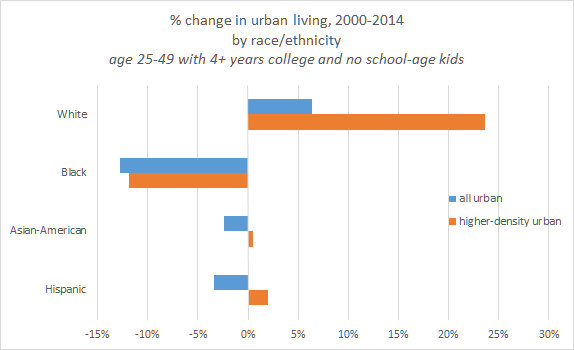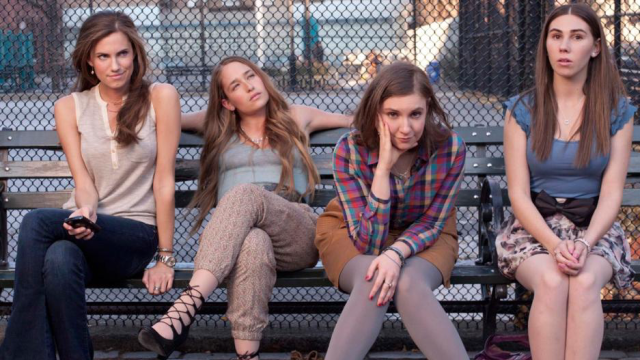We keep hearing that this is the age of rapid urbanisation: By 2050, 70 per cent of the world’s population will live in cities. But in the United States, the people moving into those cities are largely rich, white and childless. What’s more, not as many of them are moving as they were a few years ago.
Economist Jed Kolko has written a pretty damning data-driven investigation of America’s supposed urban revival. Based on some very fine-grained Census information from 2000 to 2014, he found the vast majority of the people who have moved into the densest neighbourhoods in the US over the last decade are affluent, university-educated, white Americans with no kids. This new demographic information seems to confirm something that we’ve witnessed over the last few years, at least anecdotally: rich white people keep moving into urban neighbourhoods and forcing everyone else out.

Childless university-educated whites are moving into the densest American neighbourhoods
The other troubling component of Kolko’s research is that the flow of people moving back into cities — which had been on the rise since the earlier 2000s — now seems to be stagnating, and in some cases, reversed completely. The most recent Census data shows that some suburbs (especially ones in the Sunbelt) are seeing an increase in residents for the first time in a decade. That even includes baby boomers, a group that many cities are counting on to populate their new developments after fleeing their empty nests in the suburbs. But nope, seniors aren’t rushing to cities in droves, at least not yet.
Well of course people aren’t moving to cities, you might think. Cities are really expensive right now. It’s statistically impossible for most people to afford to rent (let alone buy a place) in most of America’s largest cities. We already knew that this is why millennials are avoiding places like New York and San Francisco and sticking to “urban burbs” on their outskirts or moving to mid-sized American cities instead.
The problem with this kind of unprecedented inequality, however, is that you end up with a broken city. If a city doesn’t design for inclusion — building enough housing to allow workers to live there, or building better public transit that creates access to jobs — it will become increasingly inaccessible to those who must work there, forcing the lowest-income city-users to live farther from the center and commute longer hours.
So yes, these big American cities might be thriving on paper due to the deep pockets of the people who live there, but they’re creating increasingly dystopian situations for those who actually make the city liveable.
Girls, explained by Census data. Image: HBO
